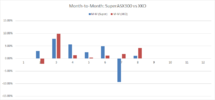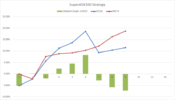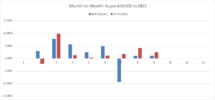Made a rather stupid mistake. In my sleepy stupor yesterday I entered in my 4 new buy orders. Later in the day I had a look and noticed that I re-entered into the positions I had closed. That is, when I entered the list of buys it was from my Sell list. I have sold those again and will have to wait another 2 days for settlement to enter into the correct positions. Thankfully it is only a minor loss as there was only small changes in prices.
Either way, a stupid mistake. Thankfully not a catastrophic.
Either way, a stupid mistake. Thankfully not a catastrophic.







 I reckon your whole approach to this is very pragmatic and great to hear. Looking forward to your further posts.
I reckon your whole approach to this is very pragmatic and great to hear. Looking forward to your further posts.
